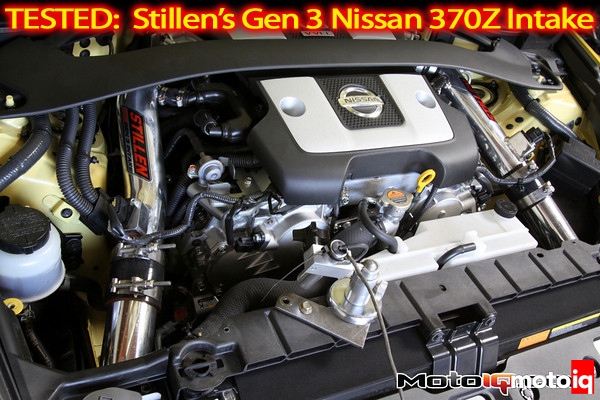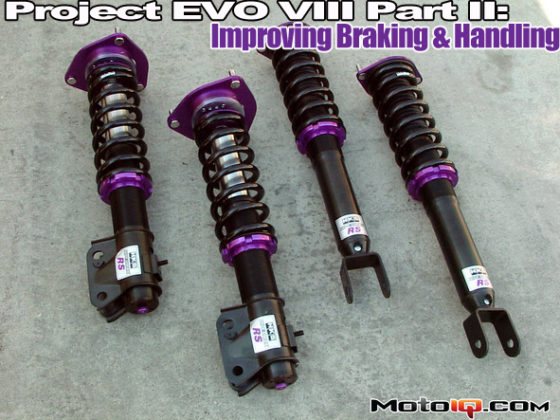
Stillen’s Gen 3 370Z Air Intake, Tested!
By Mike Kojima
The MotoIQ’s tech monkeys have been hard at work testing Stillen’s latest Gen 3 370Z cold air intake on a six speed 370Z. Since any power testing is always scrutinized by the peanut galleries on forums we have to explain the test procedures and protocol of the test as people tend to make judgments on the final results only. As we have always stated, different dynos have different methods of measuring power and you cannot compare results from one type of dyno to another. Dynos also have set up calibrations and how these are set can vary from shop to shop using the same dyno. Thus dyno results are useful for A to B testing on the same dyno and settings only, not for forum bragging rights as what we are prone to see a lot of now days.
Our test 370Z is a six-speed manual transmission sports package model equipped with a Stillen cat back exhaust, Stillen high flow cats and a Technosquare ECU reflash. For this test we used the Superflow AutoDyn 30 chassis dyno at Technosquare Inc. As we have explained in previous tests, the AutoDyn 30 is a dyno that uses both inertial and static loading with weighted wheel rollers and an eddy current power absorber. This is a very different method of measuring power from the common Dynojet dyno which is purely an inertial dyno.
The AutoDyn 30’s principal advantage over the Dynojet is that it can load the engine more than a Dynojet to give more accurate results and to give the engine and drivetrain loads more closely mimicking what they actually see when they are being driven. The eddy current power absorber makes also the AutoDyn 30 better for tuning. One major difference between the AutoDyn 30 and the Dynojet is that it gives lower, more conservative power results than the Dynojet, so don’t be surprised if you see bigger number for 370Zs parts from other people, magazines and companies, the important thing to see here is the difference in power from run to run on the same dyno, not from dyno to dyno.
We strove for accuracy and repeatability in our testing. We did all of our testing during one day. We used standard SAE correction. We thoroughly warmed up the engine and the drivetrain by driving the car on the dyno at speed for about 10 minutes to warm the engine, transmission and differential oil (this car is equipped with Technosquare’s engine oil cooler kit) as well. We started every dyno pull at the same water and intake air temperature monitored by an OBDII scan tool and allowed the car to normalize after every pull by letting it run on the rollers with no load after each pull with the dyno’s large fan running until the water temp stabilized. We monitored the air fuel ratio on every run to make sure that the tested part was affecting performance, not what the part did to the tune.
 |
| Thats a nice looking intake, polished aluminum billet integrated MAF adapter, T-bolt clamps and silicone couplers |
Stillen’s air intake came with some large power claims and we were skeptical. We had tested several other 370Z air intakes and had noted either small or no gains at all. The stock 370 has a really efficient air intake to begin with. The engines intake plenum is fed by two generously sized throttle bodies leading to twin intake tubes, twin mass air flow sensors, and two large airboxes with big filter elements both sucking cold air from in front of the core support. It doesn’t get much better than this. Our opinions were solidified by the fact that some air intake companies have given up on the 370Z after not getting any power gains or these ones that have made it to market have gotten very small gains if at all. Not only did Stillen make claims of gains but pretty big gains as well. Yeah right!



